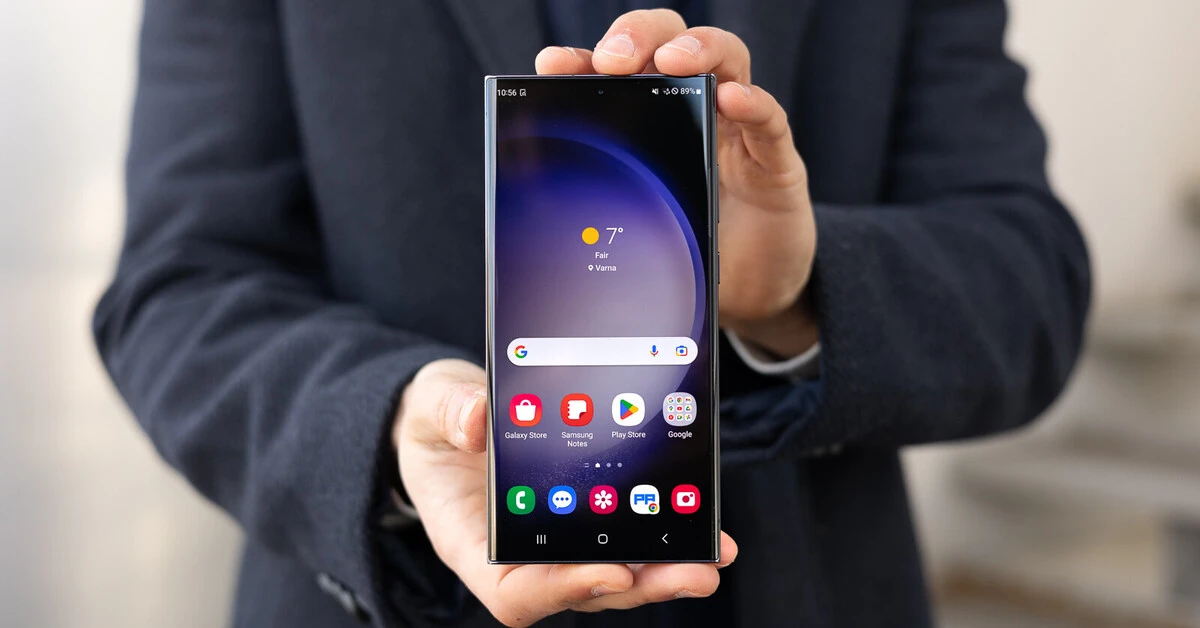CCS Insight’s tech predictions for 2024 and beyond include the expectation that smartphone manufacturers will introduce phones with self-healing displays within the next five years. This technology could involve applying a nano coating on the display’s surface that, when scratched, triggers a reaction with the surrounding air to generate a new material that fills in the imperfection. The concept of smartphone displays capable of self-repair has been a topic of discussion among tech companies for several years now.

Self-Healing Smartphone Displays Anticipated by 2028, Says Analyst Firm
According to CCS Insight, leading tech predictions for 2024 and beyond suggest that smartphone manufacturers could introduce devices with self-healing displays within the next five years. This innovative feature might involve the implementation of a nano coating on the display’s surface, which, when scratched, generates a new material that reacts to air exposure, effectively filling in the imperfection.
Shaun Collins, CEO of CCS Insight, noted that this concept is firmly within the realm of possibility rather than science fiction. While the technology is promising, setting accurate expectations for consumers remains a challenge. The prospect of self-repairing smartphone screens heralds an exciting advancement in mobile device durability and could revolutionize the industry in the coming years.
LG’s 2013 G Flex and Ongoing Quest for Self-Healing Displays
Back in 2013, LG introduced the G Flex smartphone, boasting a vertically curved screen and a mysterious self-healing coating on its back cover. LG, however, didn’t divulge the specifics of this technology at the time. This early example hinted at the potential of self-repairing features in consumer electronics, particularly addressing cosmetic scratches rather than major damage, according to Shaun Collins, CEO of CCS Insight.
LG’s initiative wasn’t an isolated case. In 2017, Motorola filed a patent for a screen employing a shape memory polymer that could mend itself when cracked upon the application of heat. Apple also secured a patent for a folding iPhone with a display cover capable of self-repairing when damaged.
Despite these promising developments, self-healing technology has yet to achieve commercial success in mainstream smartphones. There are still several hurdles to overcome before it becomes a ubiquitous feature in the mobile device industry.
Barriers and Innovations in Self-Healing Smartphone Displays
The path to self-healing smartphone displays comes with substantial challenges. Companies must make significant investments in research and development to identify groundbreaking innovations in screen technology. Additionally, substantial financial resources are required to market and sell these devices in large quantities while ensuring that consumers are well-informed about the extent of self-healing capabilities.
There’s also the concern of tech enthusiasts, such as the popular YouTuber JerryRigsEverything, who might put these self-healing features to the test using knives and other methods. Shaun Collins of CCS Insight emphasized that this isn’t the primary objective of self-healing technology; it’s more about enabling devices to make minimal repairs to their surfaces automatically.
ALSO READ: Angry Miao AFA R2 Review – A Premium Mechanical Keyboard Experience Worth Every Penny
Despite these challenges, smartphone manufacturers continue to push the boundaries of display technology. Motorola unveiled a rollable concept smartphone at the Mobile World Congress in Barcelona, designed to extend vertically when pushed upward. Samsung, on the other hand, is making significant progress in the development of smartphones with advanced displays, exemplified by its folding Galaxy Z Fold 5 and Z Flip 5 phones, which can endure hundreds of thousands of folds over their lifetimes.
HTC Expected to Exit Virtual Reality Industry by 2026
CCS Insight also forecasts that Taiwanese tech giant HTC will withdraw from the virtual reality industry by 2026. While HTC once made significant contributions to the smartphone market with innovative models like the HTC Hero, HTC Legend, HTC Desire, and HTC One, the company shifted its focus away from smartphones in 2017. HTC sold its handset business to Google, which has since made substantial strides in consumer hardware with its Pixel devices and Nest smart home products.
HTC has pivoted towards the convergence of the physical and virtual realms. In January, the company introduced its Vive XR Elite device, a lightweight headset designed for gaming, fitness, and productivity, priced at $1,099. However, CCS Insight’s prediction suggests that HTC’s involvement in the virtual reality industry may have a limited lifespan.
CCS Insight’s analysis suggests that HTC’s departure from the virtual reality (VR) industry is influenced by declining revenues and intensified competition from major players like Meta, Sony, and the recent entrant, Apple.
While HTC was a VR pioneer, the company has encountered challenges in competing effectively in the market. HTC’s pricing strategy, distinct from Meta’s aggressive approach with the Quest, has limited its ability to drive mass adoption.
Shaun Collins, CEO of CCS Insight, highlighted that HTC might see a temporary boost in interest with Apple’s foray into VR, but in the long term, it is expected to find it challenging to sustain its position in the industry. As a result, CCS Insight predicts that by 2026, HTC will exit the VR market and potentially sell its intellectual property (IP) to larger players in the sector.
Apple’s Strategies for Second-Hand Smartphone Market Control
CCS Insight anticipates that Apple will take measures to exert more direct influence over the second-hand smartphone market to prevent the rising popularity of used devices from affecting the sales of new iPhones. To achieve this, Apple might encourage customers to trade in their old iPhones directly with the company, reducing reliance on third-party marketplaces like PCS Wireless. Another approach could involve offering incentives to carriers, encouraging them to return old iPhones in exchange for credits to offset the cost of purchasing new iPhones.
Furthermore, Apple may explore the implementation of a verified grading system for refurbished iPhones, promoting the availability of high-quality secondhand devices. This aligns with the broader industry trend of adopting circular product practices, emphasizing device repair and resale to reduce electronic waste.
According to CCS Insight’s estimates, iPhones currently comprise approximately 80% of the organized secondary smartphone market.
ALSO READ: Revolutionary iPhone 16 Ultra Leaks: What’s in Store for Apple’s Game-Changer!









